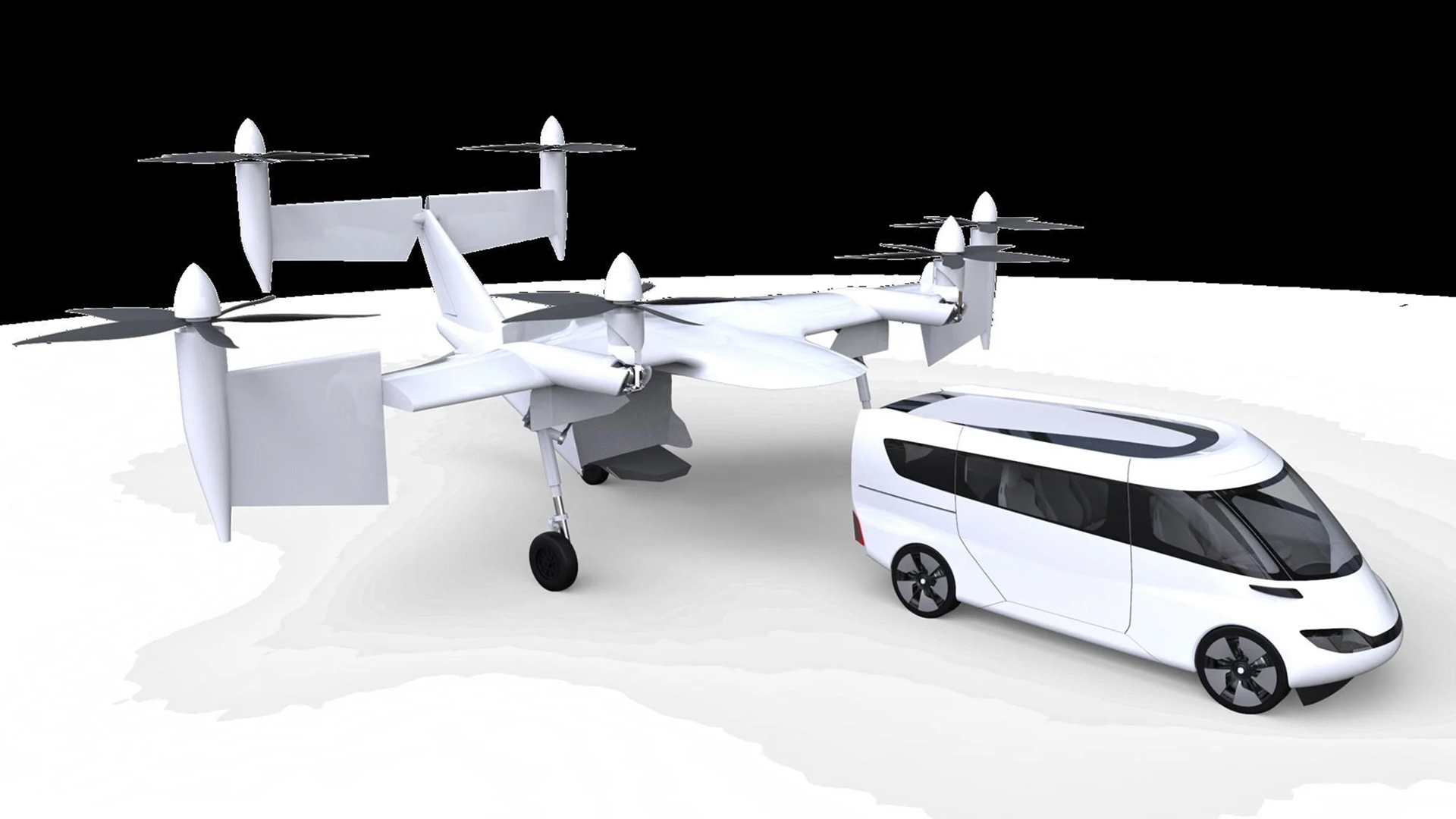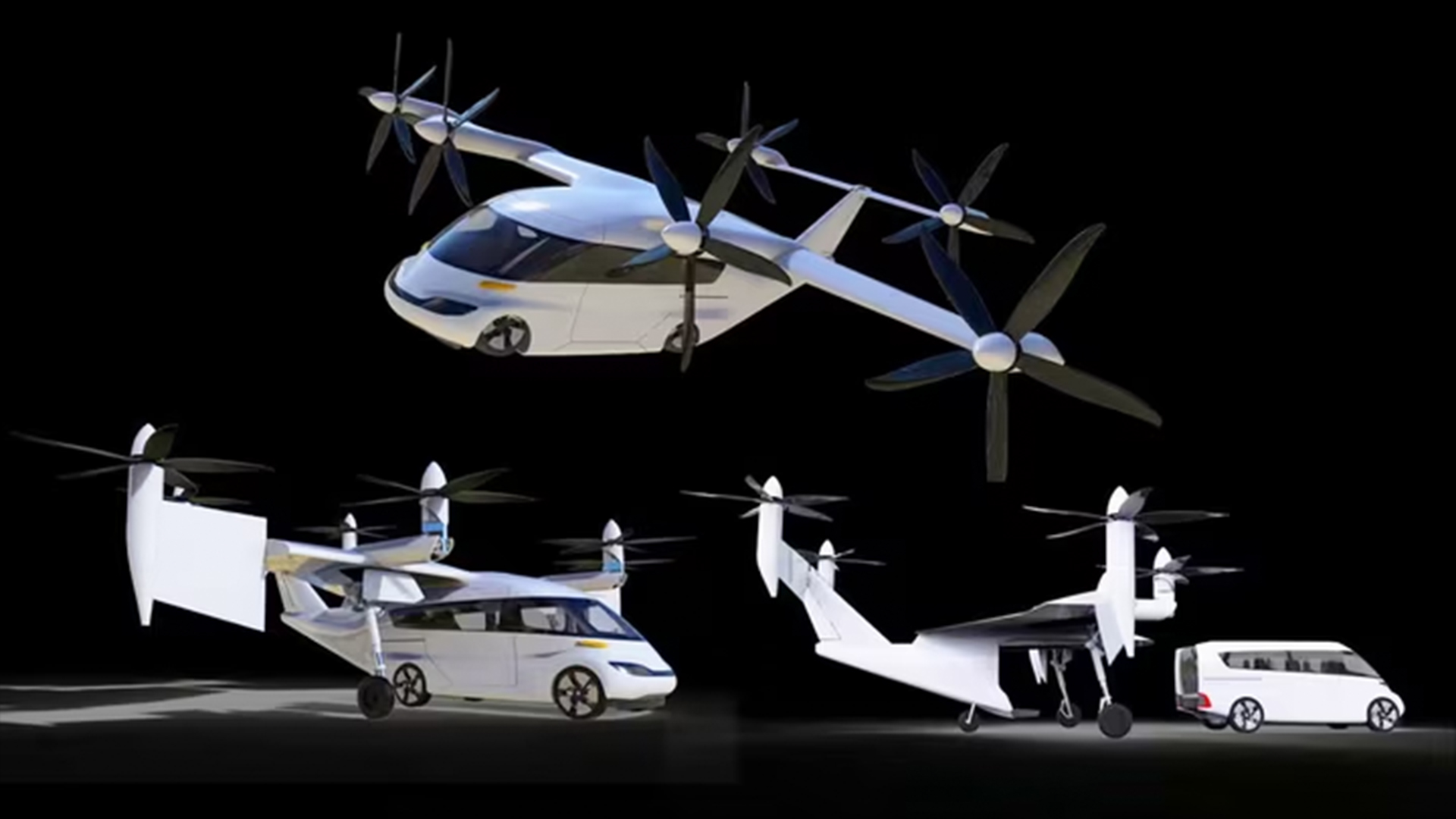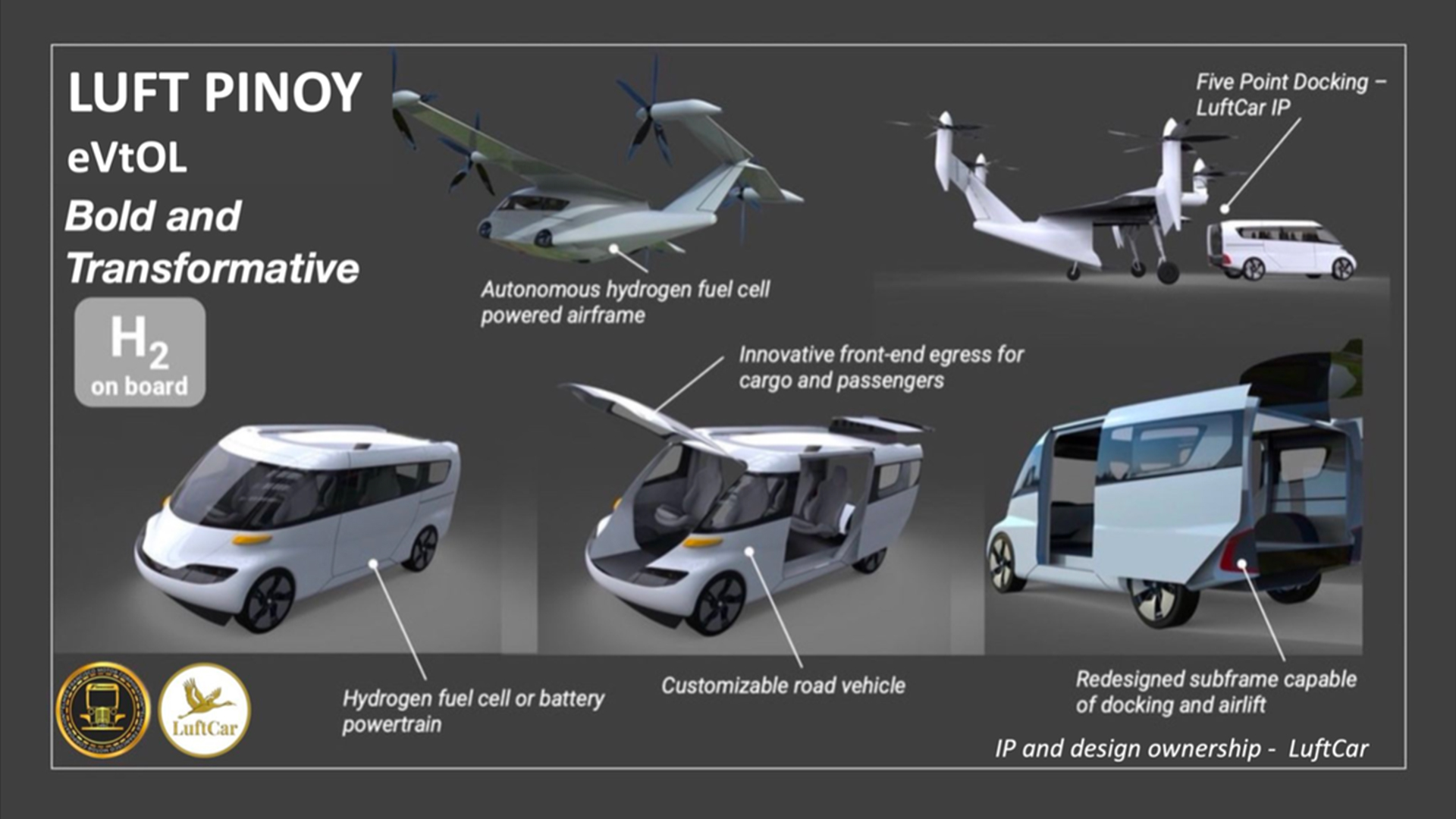
A vehicle that's a strange blend between a futuristic electric minivan and the rear half of an airplane could soon revolutionize island-hopping. The unusual vehicle, which is currently still only a concept, will be able to travel both on land and in the air and be powered by electricity or hydrogen, its designers claim.
The Luft Pinoy electric vertical takeoff and landing (eVTOL) project is being designed as a novel way to traverse the 7,101 islands that make up the Philippines archipelago. It's being developed through a collaboration between Florida-based startup LuftCar and the eFrancisco Motor Corporation (eFMC) from the Philippines — with a prototype expected to be completed before the end of 2024.
"Our flying and road vehicle concept is tailor made for connecting the archipelagos and serving cargo, air ambulance, tourism, and regional transportation verticals," Santh Sathya, CEO of LuftCar, said in a statement. "Our hydrogen propulsion will serve long distance and heavy payload carrying needs in the region."
While a full prototype has yet to be produced, the concept design is pleasingly straightforward compared with the likes of the Supernal SA-2. Rather than creating a flying car, the main component of the Luft Pinoy is a customizable minivan powered by a hydrogen fuel cell or electric battery system for road-based transit.
When it needs to take to the skies, the minivan has a subframe used to attach it to an eVTOL airframe that has four propellers and its own hydrogen power system. This effectively transforms the van into a small aircraft that can take off and land vertically, without the need for a runway.
Related: Futuristic vertical-takeoff air taxi could hit the market by 2028

While it doesn't look as slick as eVTOL air taxis designed to ferry passengers between stops in an urban environment, the Luft Pinoy's design means it could land on a local airstrip, decouple its airframe and continue the rest of its journey by road. This would cut out the need for secondary vehicles to ferry cargo from airports or helipads to their final destination.
There's no shortage of eVTOL concepts, but few have become a reality due to range limitations and a lack of legal framework for flying cars. Even electric aircraft remain stuck at the concept stage due to their range being limited to 250 miles (400 kilometers).
But hydrogen fuel cell-powered aircraft have already taken flight. Using hydrogen to power an eVTOL can offer a longer range and better weight-lifting potential than battery technology, as the Copenhagen Center on Energy Efficiency points out: “There is a potential for hydrogen fuel cells to successfully implemented to long-haul lorries, train, and ambulances that would benefit from longer driving ranges.”
Compared with lithium-ion batteries, hydrogen fuel cells are also more energy-dense and thus can be used in a powertrain that's both lighter and more powerful. And because hydrogen fuel cells don't store power but rather create it from hydrogen fuel, they can be filled up in mere minutes after being depleted, much like a gas-powered car.
That said, hydrogen fuel cells aren't as efficient as lithium-ion batteries, and generating hydrogen predominately comes from burning fossil fuels.

Should a working prototype of the Luft Pinoy arrive this year, it would still likely be held back by a lack of general legislation and law-making around the use of flying cars.
In the U.S., manufacturers must first cross regulatory hurdles before eVTOL vehicles can begin taking flight; currently, flying cars must obey all the road rules as any other car, while also having the same restrictions as small aircraft in that they can’t take off or land on a road unless in emergencies.
However, the Federal Aviation Administration (FAA) has a target of 2028 to see eVTOL use in the U.S., with its Advanced Air Mobility (AAM) Implementation Plan detailing the steps to take and processes for the regulation and certification of flying car operation.







